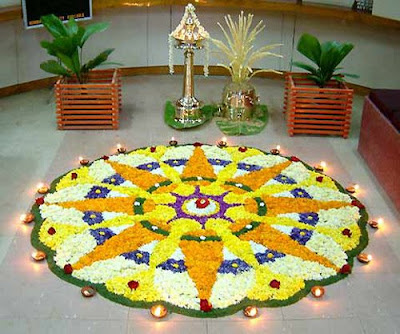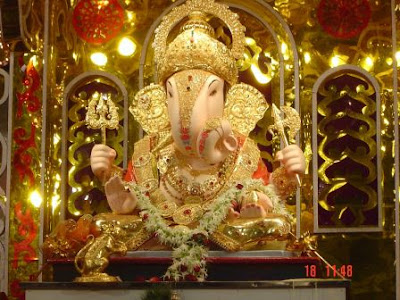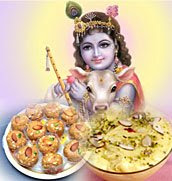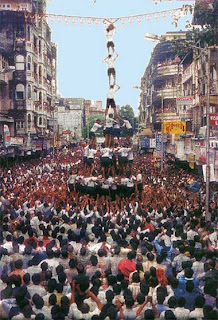Makar Sankranti
>> Thursday, December 25, 2008
A Prologue to Makar Sankranti
India is a land of festivals. Many festivals are celebrated with great enthusiasm. Makar Sankranti, which is celebrated on 14th January every year, is also one of the famous festivals of India that is celebrated with great fervor all over the country. The cultural resonance of India unites with the celebrations, devotion, happiness and zest. People from Punjab celebrate it by the name of Lohri and Maghi, people of Gujarat thank God by a riot of kites in the vast blue. The South India celebrates the festival as Pongal. Precisely, every part of country is frolicking in the festivities at the time of Makar Sankranti.
The Astrological Aspect
Makar means Capricon and Sankranti means to go from one place to another place or to change direction. It also means one's meeting with the other. So, the time when the sun changes direction from one constellation (of the zodiac) to another we call it Sankranti. In other words transition of the Sun from Sagittarius to Capricorn during the winter solstice in the northern hemisphere (Uttarayana) is known as Makar Sankranti. Hindus believe in the co-relation of cosmic events with an individual's life and values. The conventional Indian Calendar is based on lunar positions, the positions of moon, but Sankranti is a solar phenomena. And so the date of this festival is constant and does not change while other festivals do depend on the positions of moon. The other importance of this day is due to the natural change in the length and warmth of days as winters are to end form then onwards.
The Religious Aspect
The religious aspect of this day is also important. It is said that surya (sun) visits shani (saturn). This day signifies the importance of the special relationship of father and son. The son should carry forward his father's dream. Mots of the auspicious things are done at this time as it is called the day of Gods (uttranyan). Also on this day Lord Vishnu killed the demons and buried their heads under Mandar Parvat which symbolizes end of negativities and herald of a new era. Another reason behind the importance of this day is told in our great epic, Mahabharata, which says that Bhishma Pitamah, who has the boon from his father to keep himself alive as long as he wanted and so he kept himself waiting to finally leave this mortal world on this day.
The Cultural Aspect
Different states of India call the festival with different names. But the quintessence of all remain the same.
| Name of the State | Term for Makar Sankranti | Celebrations |
| Uttar Pardesh, Bihar | Khichri | Taking a dip in the holy rivers |
| Bengal | Makar Sankranti | A very big Mela is held at Ganga Sagar |
| Tamil Nadu | Pongal | Surging of rice boiled in a pot of milk |
| Andhra Pradesh | Pedda Panduga | Celebrated for Four days |
| Maharashtra | Makar Sankranti | Exchanging of multi-colored tilguds |
| Gujarat | Makar Sankranti | Kite Flying Day |
| Punjab | Maghi | Dancing and Feasting |
| Tribes of Orissa | Sankrant | Beginning of New Year |
People wake up early in the morning before sunrise to take bath and worship the sun God on sunrise to pray for living a dynamic, inspired and righteous life. They do tarpan for the great ancestors. Have special sessions of meditations. Ladies make laddoos of til and gur (Jaggery). Give donations to the needy and have Khichri in lunch. Parents visit their son's house and give gifts to their son and daughter in law.
Plan your Makar Sankranti in advance and soak yourself in the festivities on 14th January.
Swati Saxena








 In this day people wear new clothes, jewelry and other finery to participate in the Durga Puja celebration. The main attraction is undoubtedly the magnificent pandals that are made in different themes.
In this day people wear new clothes, jewelry and other finery to participate in the Durga Puja celebration. The main attraction is undoubtedly the magnificent pandals that are made in different themes. Christmas – Christmas is celebrated annually on 25th December to mark the birth of Jesus Christ. It is celebrated in India with much pomp and glory. Christmas trees are decorated and people exchange gifts among themselves. A lot of lightning and decoration is done on Christmas Eve.
Christmas – Christmas is celebrated annually on 25th December to mark the birth of Jesus Christ. It is celebrated in India with much pomp and glory. Christmas trees are decorated and people exchange gifts among themselves. A lot of lightning and decoration is done on Christmas Eve.